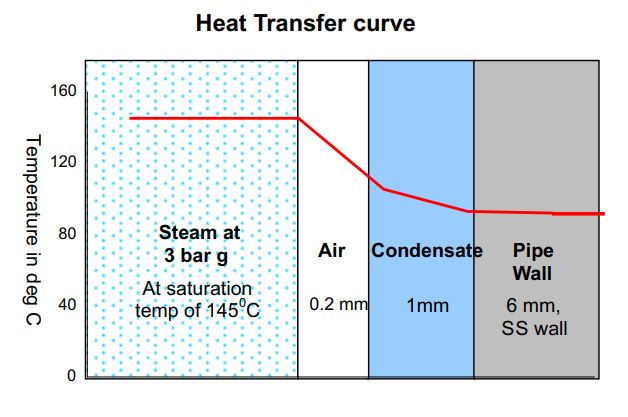Eliminate air from steam systems to ensure effective heating and thus fuel savings. Air can be between 1500 and 3000 times more resistant to heat flow than steel, and 8000 to 16000 more resistant than copper.
A film of air only 0.025 mm thick may resist as much heat transfer as a wall of copper 400 mm thick! Of course all of these comparisons depend on the
temperature profiles across each layer.
During indirect heat exchange, metal walls are not the only barriers to heat transfer. There is also likely to be a film of air, condensate and scale on the
steam side. Proper cleaning of the metal surface on the steam side can eliminate or minimise scales, but air and condensate films are of greater concern.
Air enters the system when a plant starts after a shutdown or after a batch. This
air can be removed using air vents. This will ensure effective heating and
savings in fuel.

The above graph represents the temperature gradient across a steam pipe
0 carrying steam at 3 bar g with saturation temperature of 145°C. In between the
steam and product are a 0.2 mm air film, 1 mm condensate film and 6 mm
stainless steel pipe wall.
As seen in the illustration a drop of 40°C occurs across an air film of just 0.2mm
thickness.